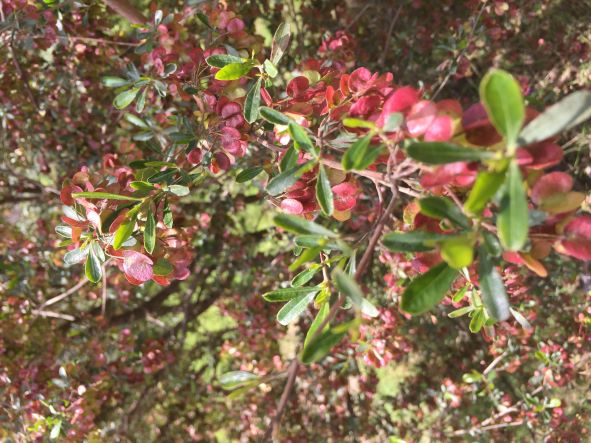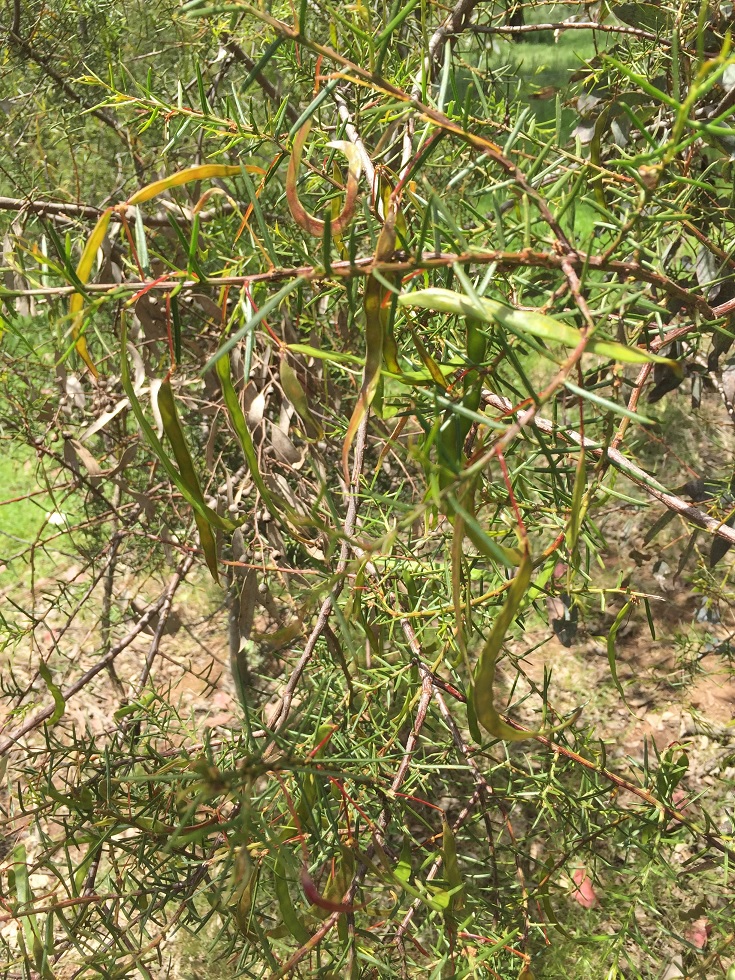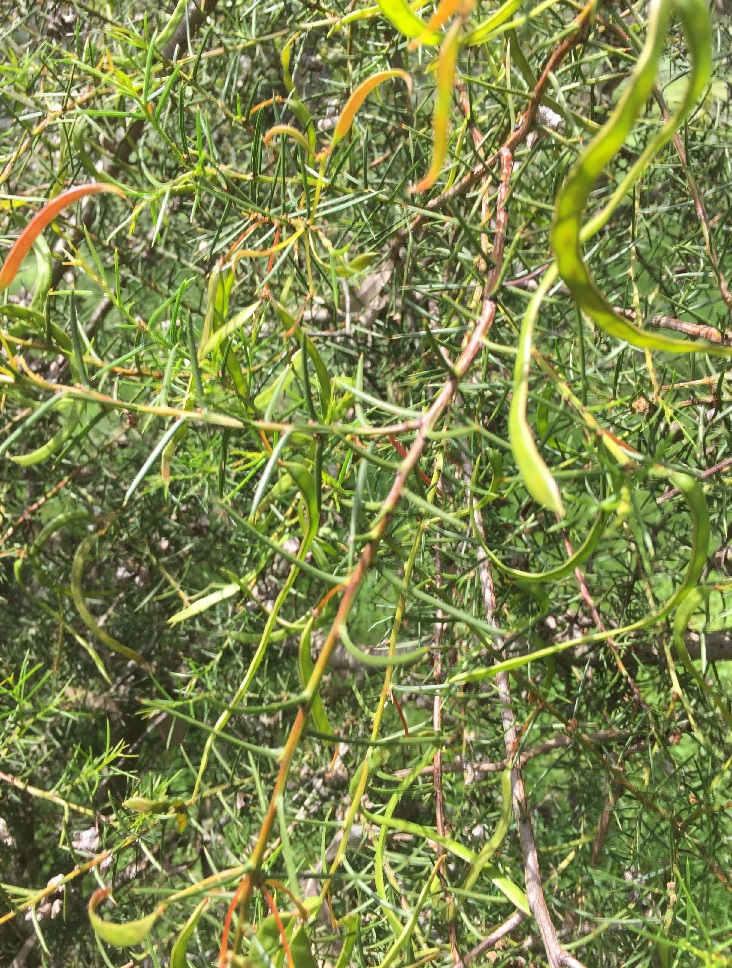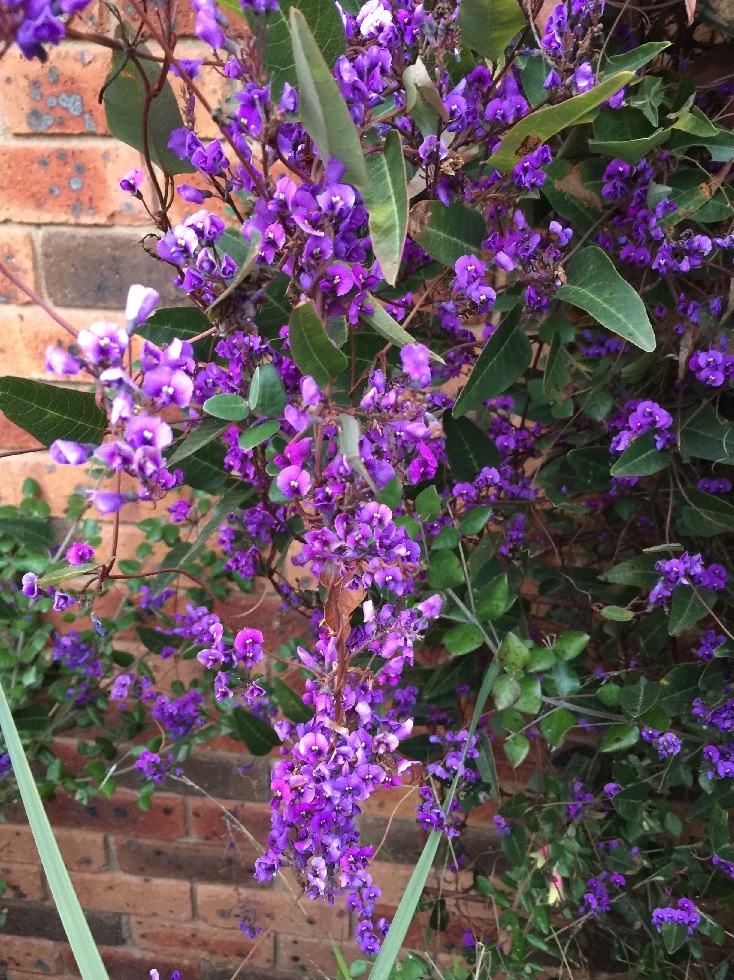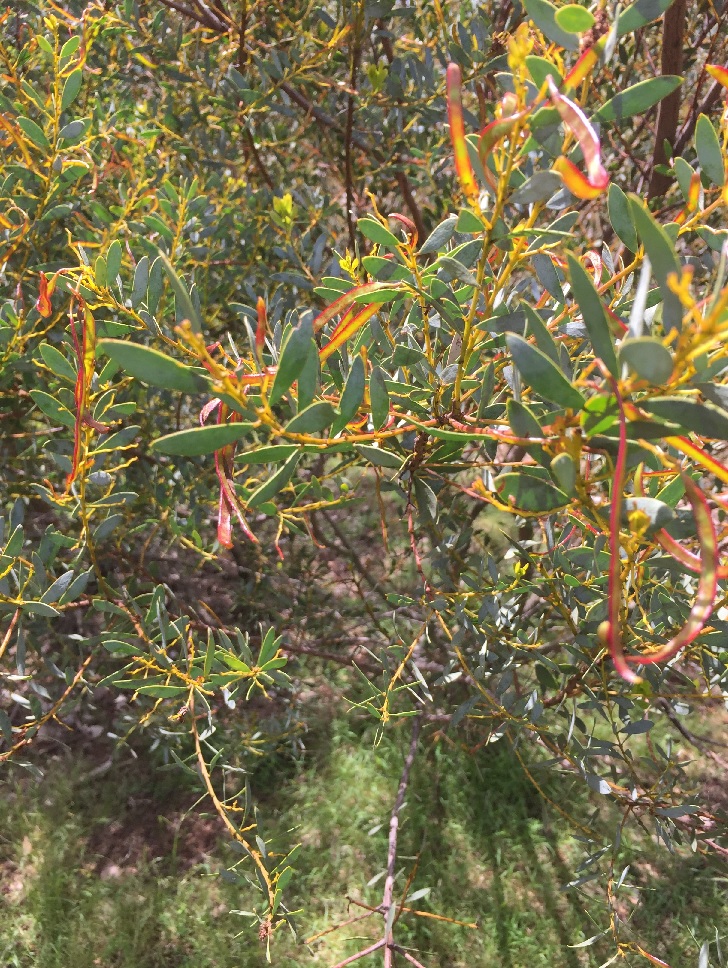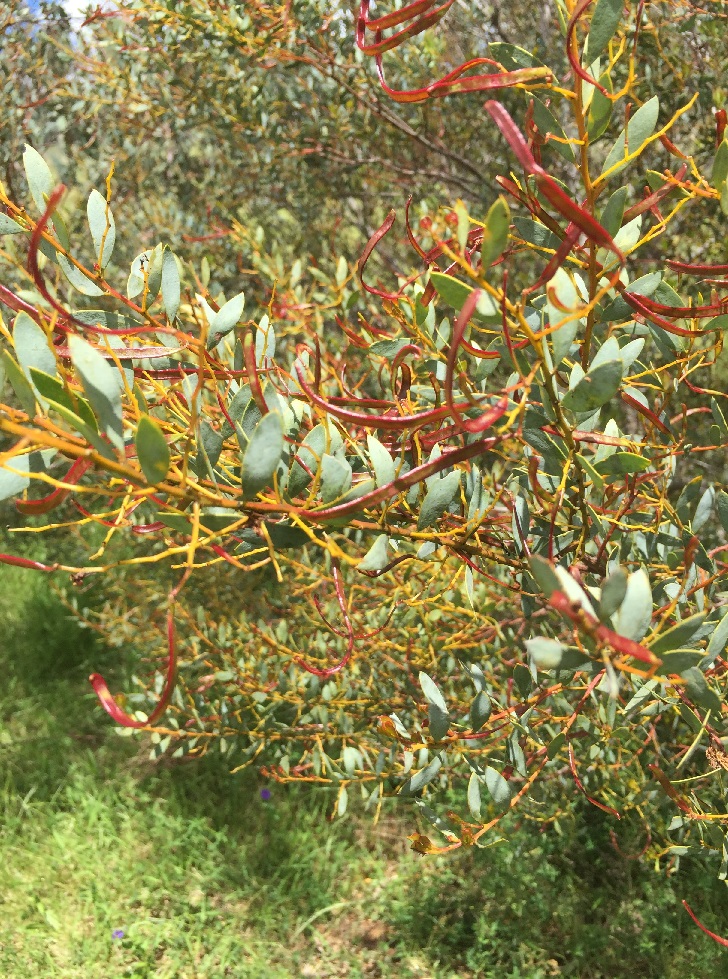Landcare nursery managers within YAN are requesting regional landholders who have large numbers of mature plants, which are part of the YAN Climate Ready list, to consider collecting local seed when the seed matures in coming months. If you are keen to assist in this venture please email Kath.
Click here to view the full list of Climate Ready plants grown across our Landcare nurseries in Murrumbateman, Bowning-Bookham and Yass.
Do you have Dodonaea viscosa subsp. angustissima - Narrow-Leaf Hopbush on your property and willing to collect seed?
Dodonaea viscosa was one of three keystone plants in our regions Climate Ready trial which commenced in 2020. If you have multiple plants which are maturing and currently seeding and are willing to collect seed for our Climate Ready team to grow in our regional Landcare nurseries please email Kath.

